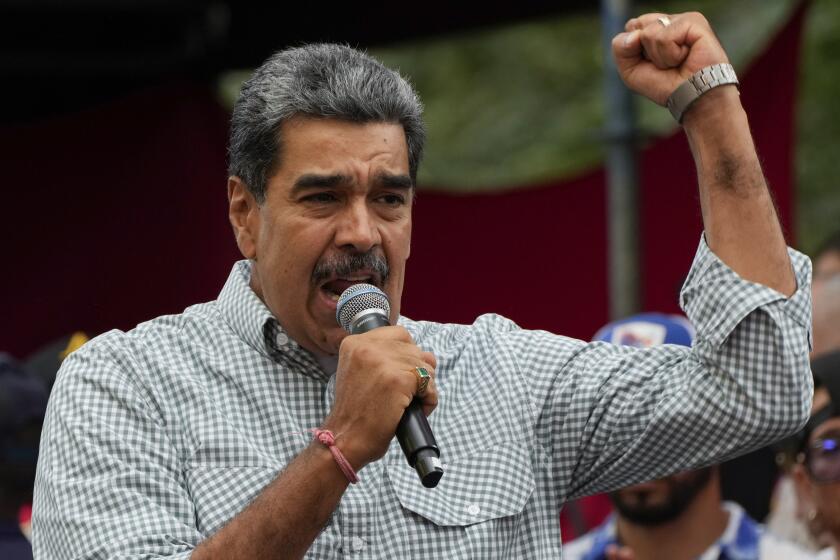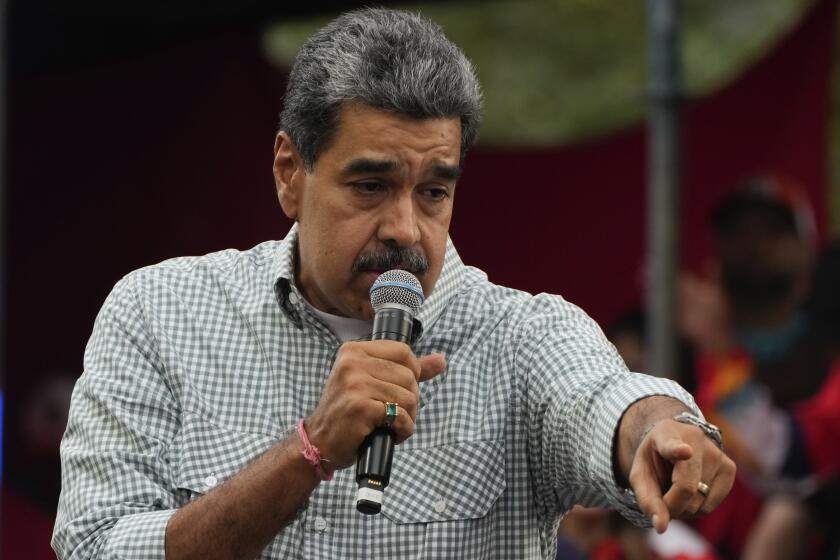In Mexico, ‘a violent country,’ focus turns to bullies in schools

In a nation that has drawn international notoriety for drug cartel carnage, public officials are now focusing on another form of violence that plagues Mexican society: school bullying.
In recent weeks, President Enrique Peña Nieto railed against bullying during a visit to the troubled state of Tamaulipas, and Mexican celebrities joined a Twitter campaign, holding signs with the hashtag #ElBullyingNoEsUnJuego, or “Bullying is not a game.” On TV, disturbing images of children being bullied — one girl being grabbed by the hair, forced to her knees and ordered to beg for mercy — have played in a loop during TV news. And on June 11, Mexico’s human rights commission announced that it would work with teachers as part of a national campaign to tackle bullying.
“The government has made a commitment … to make schools free of acoso escolar,” Peña Nieto said in his late May appearance in Tamaulipas, using the Spanish term for abuse of students, before adding, “what is known publicly as bullying.”
The anti-violence campaign picked up steam when a 12-year-old Tamaulipas boy died in May after being grabbed by a group of young assailants and flung against a wall. Published reports say the boy had complained to his teacher about being bullied but was ignored.
But Roberto Campa, a top official in the federal Ministry of the Interior, said the administration of Peña Nieto has been working on this issue since last year, shortly after he took office, as part of a broader violence-prevention program.
Campa said that the issue had been largely overlooked.
“I think it was given less importance for many years. It was considered normal,” he said. “Clearly, it’s not normal, and things have changed and the issue is becoming more visible and central in public discussions.”
Campa said the problem of bullying originates outside school, often within families, but that schools should at least be a protective space for students.
Others, such as La Razon columnist Monica Garza, said the word risks becoming a convenient, trendy and superficial catchall in a country rife with social ills, where the mistreatment and abuse of people of all ages and of laws — often by authorities or drug cartels — has long been rampant.
Some say children who are abusing others now — and who did years before without an official response — might one day become cartel henchmen who spread death throughout Mexico.
“Mexico is a violent country that tolerates violence,” Garza wrote. “Bullying,” she said, “has become the word of the moment, signaling any kind of violence, at school or at work, and it’s time to call things by their names. Murder is not bullying. It’s murder. Assault is not bullying. It’s assault.... Many violent children in the schools aren’t bullies, they’re potential delinquents.”
The campaign follows in the footsteps of high-profile anti-bullying efforts in the United States. As such, it’s not surprising that in Mexico the English word has been adopted into the vernacular.
Because there is no single Spanish synonym, children outside a middle school in Tetelpan on the southern edge of Mexico City use the English word, which they pronounced “boo-leeng.” Sometimes they used Spanglish verbs like “buleando.”
“We’re very worried about the bullying,” said Brenda Quiroz Arteaga, 42. “My daughter was harassed for a long time because she’s a little chubby and she suffered a lot.… I’m all for expelling from the schools all the students who bullean their schoolmates.”
Using the word “bullearon,” 12-year-old Julian Perez said, “I’ve been bullied because of my stature. I’m short. But I’ve become used to it and if I don’t pay it any mind, they leave me alone.”
Sandra Torres, 13, declared one boy in her class a “bulleador” who was under watch, but was a real “nightmare.”
Parent Renata Fernandez, 44, had a slightly different thought.
“I think bullying has always existed,” she said. “But now it’s in fashion to talk about this theme. Before it didn’t get a lot of attention.”
The newspaper Milenio reported recently that a mother filed a complaint with Mexico City police against her own son for bullying students at his middle school. The mother knew that he had been abusing and humiliating and even extorting money from other students online, according to the newspaper. It was after she attended a talk about cyber-bullying that she went to police.
Mario Cruz, a professor at the Ibero-American University in Mexico City who coordinates its human rights program, said the problem is an old one, but that many Mexicans — especially youths — are only now being exposed to the concept of trying to stop it.
“This is something that got away from them and they had no strategy for coordinating different government offices to do something about this,” Cruz said. “This campaign is a corrective step but at least it makes the phenomenon more visible.”
Sanchez is a news assistant in The Times’ Mexico City bureau.
Twitter: @hbecerralatimes
More to Read
Sign up for Essential California
The most important California stories and recommendations in your inbox every morning.
You may occasionally receive promotional content from the Los Angeles Times.











